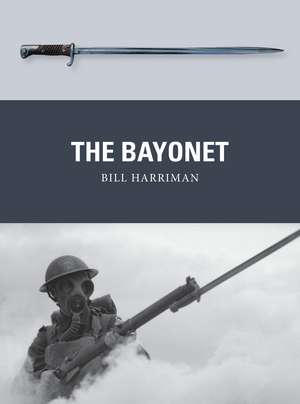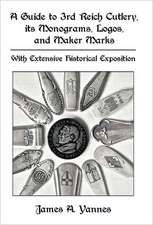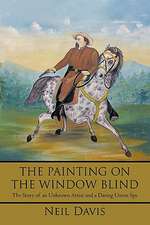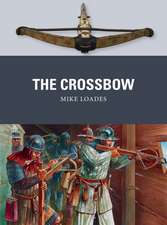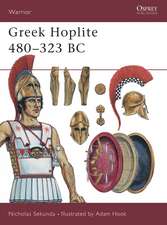The Bayonet: Weapon, cartea 78
Autor Bill Harriman Ilustrat de Adam Hook, Alan Gillilanden Limba Engleză Paperback – 14 apr 2021
Din seria Weapon
- 33%
 Preț: 62.37 lei
Preț: 62.37 lei - 30%
 Preț: 71.01 lei
Preț: 71.01 lei - 25%
 Preț: 75.88 lei
Preț: 75.88 lei - 29%
 Preț: 71.46 lei
Preț: 71.46 lei - 30%
 Preț: 71.27 lei
Preț: 71.27 lei - 30%
 Preț: 71.46 lei
Preț: 71.46 lei - 29%
 Preț: 71.27 lei
Preț: 71.27 lei - 25%
 Preț: 75.42 lei
Preț: 75.42 lei - 42%
 Preț: 62.18 lei
Preț: 62.18 lei - 25%
 Preț: 75.42 lei
Preț: 75.42 lei - 25%
 Preț: 75.42 lei
Preț: 75.42 lei - 24%
 Preț: 66.60 lei
Preț: 66.60 lei - 25%
 Preț: 75.42 lei
Preț: 75.42 lei - 24%
 Preț: 76.32 lei
Preț: 76.32 lei - 42%
 Preț: 62.18 lei
Preț: 62.18 lei - 24%
 Preț: 76.32 lei
Preț: 76.32 lei - 30%
 Preț: 61.76 lei
Preț: 61.76 lei - 25%
 Preț: 75.88 lei
Preț: 75.88 lei - 29%
 Preț: 71.99 lei
Preț: 71.99 lei - 38%
 Preț: 66.35 lei
Preț: 66.35 lei - 25%
 Preț: 75.88 lei
Preț: 75.88 lei - 24%
 Preț: 71.46 lei
Preț: 71.46 lei - 25%
 Preț: 71.01 lei
Preț: 71.01 lei - 29%
 Preț: 71.01 lei
Preț: 71.01 lei - 25%
 Preț: 74.54 lei
Preț: 74.54 lei - 38%
 Preț: 67.05 lei
Preț: 67.05 lei - 24%
 Preț: 66.79 lei
Preț: 66.79 lei - 25%
 Preț: 66.17 lei
Preț: 66.17 lei - 33%
 Preț: 67.05 lei
Preț: 67.05 lei - 24%
 Preț: 66.60 lei
Preț: 66.60 lei - 24%
 Preț: 67.05 lei
Preț: 67.05 lei - 24%
 Preț: 67.05 lei
Preț: 67.05 lei - 24%
 Preț: 67.05 lei
Preț: 67.05 lei - 24%
 Preț: 67.05 lei
Preț: 67.05 lei - 30%
 Preț: 71.20 lei
Preț: 71.20 lei - 38%
 Preț: 67.05 lei
Preț: 67.05 lei - 25%
 Preț: 71.01 lei
Preț: 71.01 lei - 24%
 Preț: 71.46 lei
Preț: 71.46 lei - 20%
 Preț: 79.91 lei
Preț: 79.91 lei - 25%
 Preț: 71.01 lei
Preț: 71.01 lei - 25%
 Preț: 75.61 lei
Preț: 75.61 lei - 25%
 Preț: 75.42 lei
Preț: 75.42 lei - 25%
 Preț: 75.61 lei
Preț: 75.61 lei - 25%
 Preț: 75.42 lei
Preț: 75.42 lei - 30%
 Preț: 75.00 lei
Preț: 75.00 lei - 30%
 Preț: 75.61 lei
Preț: 75.61 lei - 30%
 Preț: 75.69 lei
Preț: 75.69 lei - 30%
 Preț: 75.88 lei
Preț: 75.88 lei - 30%
 Preț: 75.61 lei
Preț: 75.61 lei
Preț: 66.60 lei
Preț vechi: 88.26 lei
-25% Nou
Puncte Express: 100
Preț estimativ în valută:
12.75€ • 13.26$ • 10.52£
12.75€ • 13.26$ • 10.52£
Carte disponibilă
Livrare economică 24 martie-07 aprilie
Preluare comenzi: 021 569.72.76
Specificații
ISBN-13: 9781472845368
ISBN-10: 1472845366
Pagini: 80
Dimensiuni: 184 x 248 x 8 mm
Greutate: 0.25 kg
Editura: Bloomsbury Publishing
Colecția Osprey Publishing
Seria Weapon
Locul publicării:London, United Kingdom
ISBN-10: 1472845366
Pagini: 80
Dimensiuni: 184 x 248 x 8 mm
Greutate: 0.25 kg
Editura: Bloomsbury Publishing
Colecția Osprey Publishing
Seria Weapon
Locul publicării:London, United Kingdom
Caracteristici
Since the 17th century the bayonet has become an indispensable weapon for any infantry soldier and of great significance to soldiers in many other support arms
Notă biografică
Bill Harriman is Director of Firearms at the British Association for Shooting and Conservation, and appears regularly on British television as part of the team of experts on the BBC's Antiques Roadshow program. A former Territorial Army officer with 18 years' service, he is also a forensic scientist dealing with cases involving firearms, ammunition and other weapons.Adam Hook studied graphic design, and began his work as an illustrator in 1983. He specializes in detailed historical reconstructions, and has illustrated Osprey titles on subjects as diverse as the Aztecs, the Ancient Greeks, Roman battle tactics, several 19th-century American subjects, the modern Chinese Army, and a number of books in the Fortress series. His work features in exhibitions and publications throughout the world. He lives in East Sussex, UK. Born in Malaya in 1949, Alan Gilliland spent 18 years as the graphics editor of the Daily Telegraph, winning 19 awards in that time. He now writes, illustrates and publishes fiction (www.ravensquill.com), as well as illustrating for a variety of publishers (alangillilandillustration.blogspot.com). He lives in Lincolnshire, UK.
Cuprins
IntroductionDevelopmentUseImpactConclusionGlossaryBibliographyIndex
